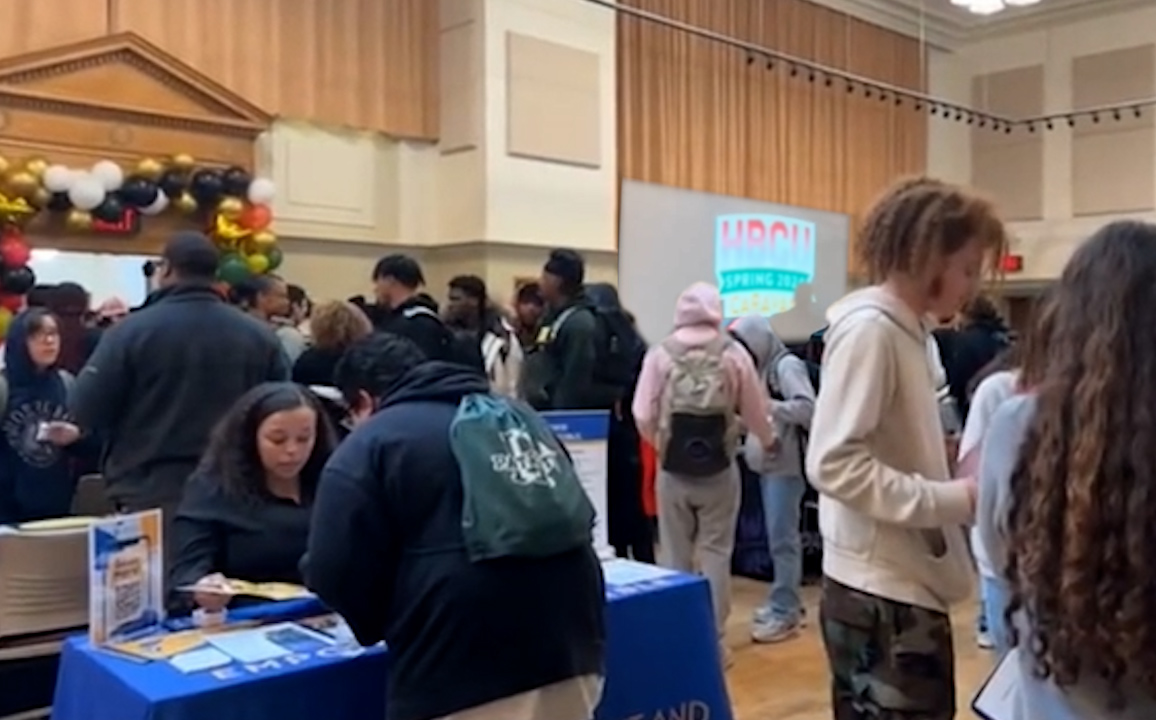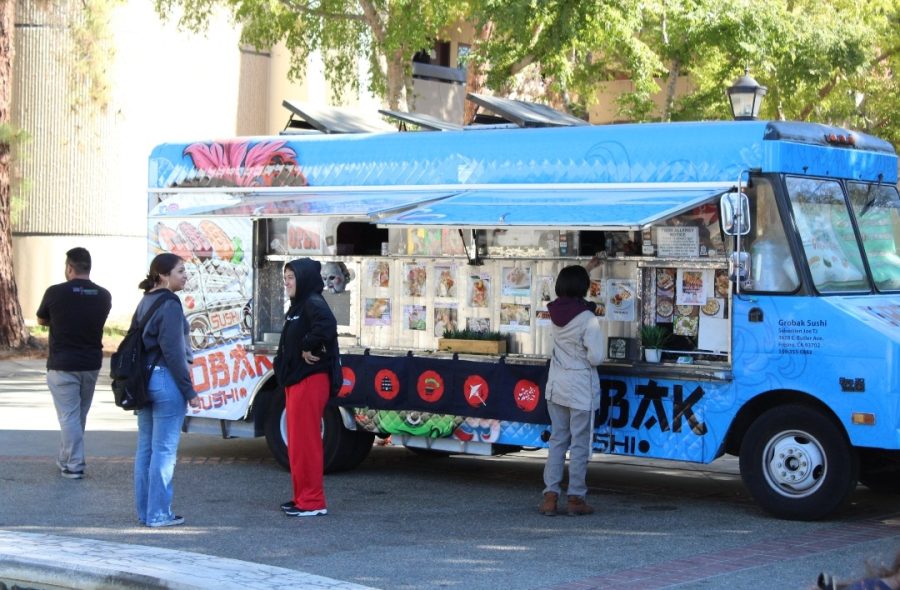The mere mention of the word ‘saxophone’, will evoke images of some smoky nightclub, with cocktails flowing and scantily clad women cavorting about. The history of the saxophone actually had a much more sophisticated bloodline, as it was originally invented for the world of classical music.
The very popular series, Jazz at the Library, once again had an overflow crowd on Tues. April 19, as Dr. Alan Durst, Professor of Jazz Studies at Fresno State, gave us his take on the invention of the saxophone and its inception into jazz. Durst, who received his musical doctorate from UCLA, explained, the saxophone was created by none other than Adolphe Sax, a Belgian musician and student at the Brussels Conservatory of Music. He was originally looking for an instrument that could fill the gap between the woodwind tone of the clarinet and the trumpet, mainly for military bands.
Sax was encouraged to move to Paris in 1841 to perfect his invention, and was actually given a boost by the support of famed composer Hector Berlioz. In 1845, Sax unveiled his newly patented group of saxophones to the French Army Band in an unorthodox way. This will forever be known as the first “Battle of the Bands’ as Sax and his fellow musicians overwhelmed the French military marching band. King Louis XIII officially inducted the saxophone into the regiment, and soon gained popularity.
Over the next 75 years the saxophone was under utilized, with only a handful of composers creating music that generated any spark. The original sound that the saxophone emitted was a smooth and mellow tone, something akin to a chamber music performance. One of the problems the saxophone had was its inability to be heard above the blaring brass and percussion instruments of the day. Alterations and adjustments to the mouthpiece and other factors contributed to the louder more commanding sound, that can be heard today in nightclubs, in Rock’ n’ Roll bands, and in football stadiums with marching bands.
Dr. Durst was able to retrieve and play some rare and early recordings of some of the first classical duets (saxophone and piano) from 1904! These were quite rough recordings, but the attentive audience was able to grasp the idea. As an educator and performer, Durst summoned his trusty piano man, David Aus to join him in a re-creation of those classical concerts. With his alto sax he was able to create the soft and silky quality of what must have been a memorable concert for the people of 1904. Remember this was before the riots that occurred when Igor Stravinsky dropped the Rite of Spring passage onto the masses in 1913!
The first actual concert for a saxophone was in 1926 by Rudy Wiedoeft, in the Aeolian Hall in N.Y. He brought his Tin Pan Alley style of music to new heights with his comical rendition of the ‘Sax-O-Phun’. The piece featured advance techniques, such as tongue slapping and voice murmurings, creating the ‘laughing sax’. The audio clip that Durst played for the crowd was hilarious, yet it was reminiscent of some early cartoon soundtracks that might still be around today.
Durst was recanting his youth, and mentioned a historical fact; the guitar craze of the sixties had nothing on the saxophone explosion that followed this concert in 1926. People were urged to add the saxophone to their homes and it meandered in to every cavity of culture, churches, recital halls and schools. The Big Band era followed in the 1930s, and continued through WWII, until the inevitable happened.
Saxophone players and other artists felt confined to their same old routines, as the loyal fans who came to dance to these famed orchestras wanted to hear the music exactly as it sounded on the Victrola at home. The early rebels as they may have been called, stepped to the fore front, playing improvised solos and creating the first whisperings of jazz as we know it. Dr. Durst was timely with his sound clips from such early stand outs as Sidney Bichet, and Coleman Hawkins. But the crowd seemed to know who Lester Young was, an obvious fan favorite and really the first ‘cool cat’ to emerge out of the Big Band sound. He had such a soft and sultry sound, he was known for his Kansas City R&B sound, floating over the bar lines with sexual innuendo. He was nicknamed ‘The Prez” of cool by his duet partner Billie Holiday, and the nickname stuck.
After the end of WWII, a new sound emerged from the saxophone, and its innovators of jazz. The Be-Bop era was born with the emergence of Charlie Parker, (aka as Bird or Birdland) who is remembered most for his style of creating new melodies in stride based on a tunes basic structure. Durst mentions that the essence of jazz is truly improvisational, and Parker was solely responsible for the many styles of improv jazz today. Every successful woodwind artist was originally inspired by Parker, in some degree, and in tribute played a famous audio clip of ‘Just Friends’. This was a truly innovative endeavor back in 1950, and featured a full blown string orchestra. This was considered a masterpiece by his classical peers, but his true calling was bebop. To illustrate the point, Durst once again wowed the audience with his duet rendition of Parker’s most memorable tune, YardBird Suite.
In his closing remarks, Durst explained that due to time constraints, he would stop there, but not before paying homage to hundreds of saxophone players over the years. Maybe your favorite was there. The Jazz at the Library series concludes on May 17, at 7 p.m.



